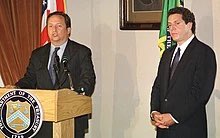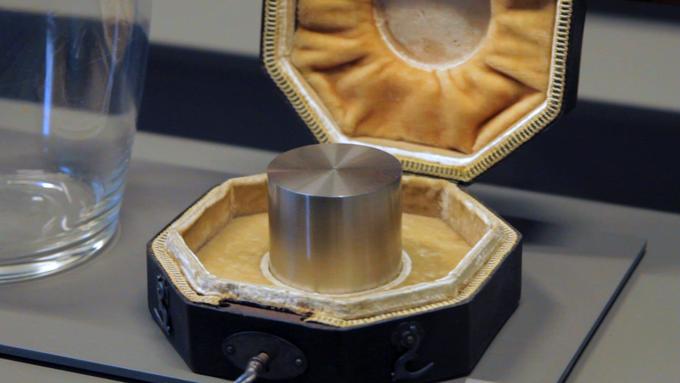Audit Faulted Cuomo's HUD Overhaul - WSJ
In 1999, the program was the subject of a scathing audit report by the HUD Inspector General's office, which recommended that it be
Congress eliminated its funding that year, over the objections of several Democratic lawmakers, including Sen. John Kerry and now-Vice President Joe Biden.
More than half of the Community Builders interviewed by the auditors said they spent most of their time on
"Considering that 228 Community Builders came from HUD's monitoring side, there is an appearance HUD favors the outreach and public relations over the monitoring and compliance function," the report said.
The Inspector General's report also said Mr. Cuomo's staff took unusual steps to hinder its review,
"When the request came in, everyone wondered why the department needed it. Why do they need to know who spoke with the auditors?" said a
Saul Ramirez, a deputy secretary under Mr. Cuomo, said the request for the names was "standard procedure" and intended to help headquarters organize the schedules of field staffers involved in the auditing process.


More from David Cranmer Underdown
More from Fraud
A thread on attempted election fraud in Canada: First, most breaches of election law here are related to financing, not illegal voting or ballot-box stuffing. And most are minor. That’s because our elxn finance laws are extremely tight and contribution/spending limits low. 1/
I covered two of the best-known cases in recent years: “robocalls” in 2011 election and the “in-and-out” affair of 2006. You probably heard a lot about the former and maybe nothing of the latter. Both were important for different reasons. 2/
In robocalls, the Conservative party’s voter-tracking database, CIMS, was used to make fraudulent automated calls to about 7,000 identified Liberal voters in Guelph, Ontario, directing them to the wrong polling location. The scheme didn’t work. The Liberals won the riding. 3/
Elections Canada caught on to the scheme on the day the calls were made, election day, and began investigating almost immediately. The long and complex investigation found the calls originated with someone working for the Conservative candidate in Guelph. 4/
After a trial, a lone campaign staffer was found guilty. He served jail time. The judge said it appeared to him others were likely involved but no one else was charged. Throughout, the CPC denied any knowledge of the scheme. 5/
Hey Canada, can we talk about how Conservatives are fundraising based on dangerous lies & how it needs to stop immediately? #cdnpoli pic.twitter.com/2LSHcJtsMf
— \U0001f142\U0001f130\U0001f13c\U0001f138 (@samifouad) January 8, 2021
I covered two of the best-known cases in recent years: “robocalls” in 2011 election and the “in-and-out” affair of 2006. You probably heard a lot about the former and maybe nothing of the latter. Both were important for different reasons. 2/
In robocalls, the Conservative party’s voter-tracking database, CIMS, was used to make fraudulent automated calls to about 7,000 identified Liberal voters in Guelph, Ontario, directing them to the wrong polling location. The scheme didn’t work. The Liberals won the riding. 3/
Elections Canada caught on to the scheme on the day the calls were made, election day, and began investigating almost immediately. The long and complex investigation found the calls originated with someone working for the Conservative candidate in Guelph. 4/
After a trial, a lone campaign staffer was found guilty. He served jail time. The judge said it appeared to him others were likely involved but no one else was charged. Throughout, the CPC denied any knowledge of the scheme. 5/
🚨 SMARTMATIC + Venezuela = Election fraud disaster
@SidneyPowell1
CONTINUE⬇️

In a document found on Wikileaks:
“Smartmatic was founded in the late 90s by 3 Venezuelans, Antonio Mugica, Alberto Anzola, and Roger Pinate.
The electronic voting company went from a small technology startup to a market player in just a few
“Mugica has told Poloffs on several occasions that Anzola, Pinate, and he are the owners of Smartmatic, though they have a list of about 30 investors who remain anonymous.”
“Prior to 2004, SMARTMATIC had 0 election experience and otherwise was a fledgling business.
Reportedly critical to the SBC consortium’s award of the $91 mil 2004 recall election contract from the Chávez dominated CNE was a $150,000 + investment by the Venezuelan government”
https://t.co/zBeQryUqHw
@SidneyPowell1
CONTINUE⬇️

In a document found on Wikileaks:
“Smartmatic was founded in the late 90s by 3 Venezuelans, Antonio Mugica, Alberto Anzola, and Roger Pinate.
The electronic voting company went from a small technology startup to a market player in just a few
“Mugica has told Poloffs on several occasions that Anzola, Pinate, and he are the owners of Smartmatic, though they have a list of about 30 investors who remain anonymous.”
“Prior to 2004, SMARTMATIC had 0 election experience and otherwise was a fledgling business.
Reportedly critical to the SBC consortium’s award of the $91 mil 2004 recall election contract from the Chávez dominated CNE was a $150,000 + investment by the Venezuelan government”
https://t.co/zBeQryUqHw























